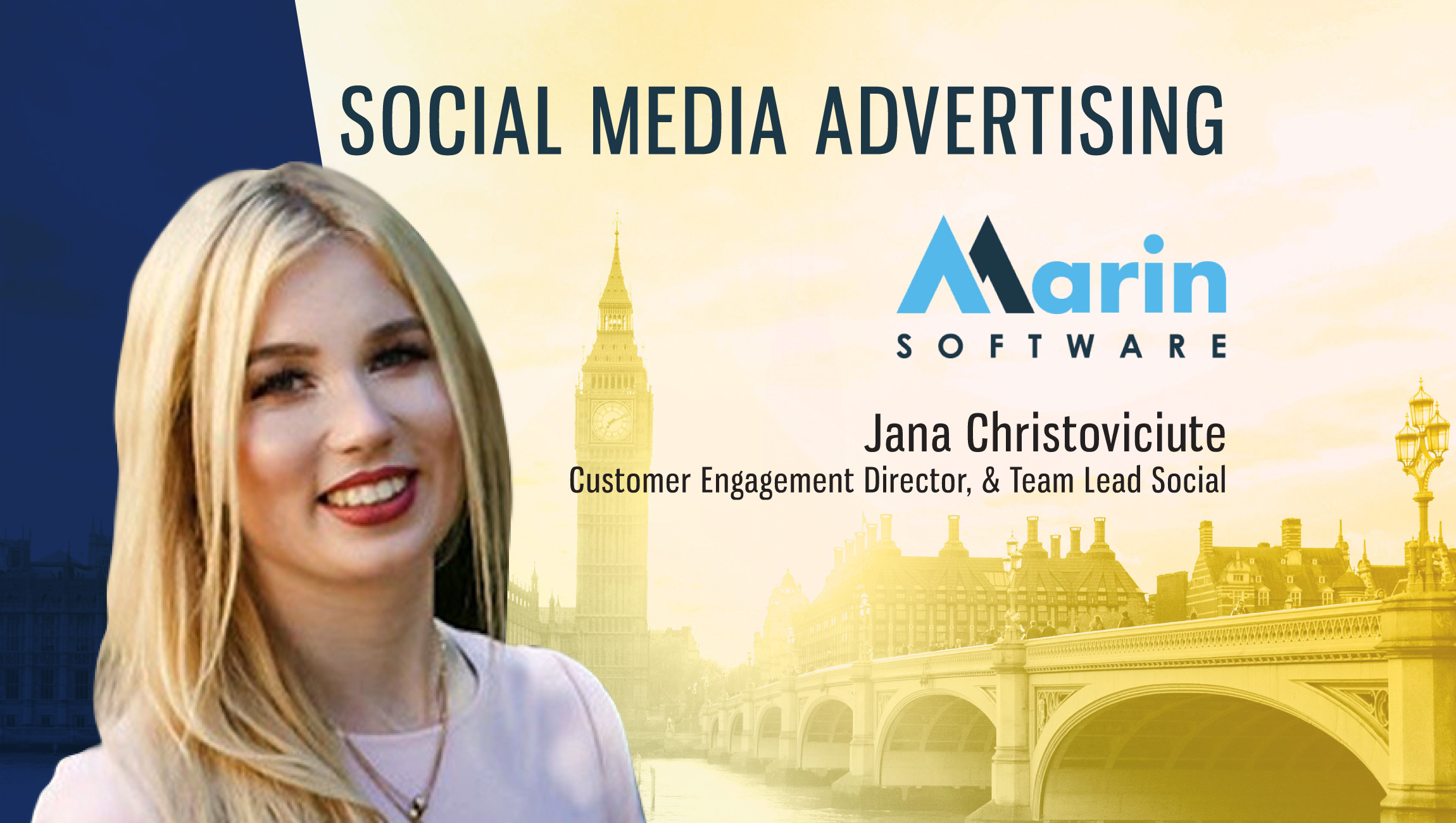Jana Christoviciute
Director, Customer Engagement, and Team Lead, Social, Marin Software
Instagram advertising, IGTV in particular, and a band of new social media advertising updates from Facebook and Twitter have forced modern marketing teams to relook their campaigns. Influencers, AI, live chat, chatbots and video content have been driving audience engagement on mobile. We spoke to Marin Software’s Customer Engagement Director and Team Lead, Social, Jana Christoviciute, to understand the reasons for the growing shift in social media advertising, from Facebook to Instagram.
Html code here! Replace this with any non empty text and that's it.
Tel us about your role at Marin Software and the team/technology you handle.
I have been at Marin Software since 2015 and am currently the Customer Engagement Director and Team Lead, Social. My main role is to work with the social team to ensure that we are providing our clients with the best customer experience possible and give them the best advice to efficiently advertise on social platforms. As Marin Software is an open platform and we are always open to feedback, we are continuously trying to both understand our customer’s goals and develop our own product.
What makes Instagram a more powerful advertising platform than the rest in the field?
With new technologies transforming the way people are behaving, Instagram is able to adapt by bringing more creativity and more personalized messaging than ever before. This is extremely powerful for brands as it allows consumers to easily find their relevant community, which will help grow the brands reach and influence. Also Instagram’s innovative, mobile first, simple and intuitive attitude lets brands effortlessly build a relationship with their customers and become part of their daily life.
For advertisers, Instagram allows them to rapidly change to new ad formats through easy advertising tools. Combine this with research from Facebook revealing that a third of the most viewed stories are users interacting with businesses, Instagram has created the perfect environment for many brands to reach their audiences.
How should brands prepare for the growing shift in social media advertising – from Facebook to Instagram?
If brands want to stay ahead of the game it is essential they understand how Instagram works and how they can deliver their message to the right audience. To prepare for this shift I would encourage brands to test adverts on the platform, learn from the adverts’ strengths and weaknesses and finally adapt to the most effective ad formats.
Before adapting assets it is also important to understand and research how people engage with Instagram stories. For example according to Facebook 40% of Instagram stories are video, with 60% of them being with the sound on.
To create effective Instagram stories, think about creative story telling – Instagram formats allow you to be creative and craft assets to capture imagination well-branded and authentic content – this will build trust (brand loyalty) and encourage feedback key moments to enable your audiences to respond – these moments can then be used to drive awareness and action
Finally, a brand should think about their measurement tools. To fully utilize measurement tools the brand should ensure the tracking tool is correctly implemented, letting you not only get the relevant numbers but also gain an understanding on how users interact with your brand. Through this the brand can focus more specifically on achieving their desired objectives and KPIs.
What impact do you see on Instagram budgets post-IGTV launch?
The launch of IGTV illustrates Facebook’s concerns and work towards building communities and bringing customers closer to the brands they love. Even though there are no ads on IGTV yet, with younger generations spending more time looking towards influencers, rather than professionals, for inspiration the Instagram community is becoming a significant power tool for marketers.
Growth in the IGTV community will help brands to better understand a user’s behavior, segment the audiences and ultimately use Instagram for full funnel advertising at a cheaper cost.
Overall this means that with a mix of organic branding capabilities and paid formats, more budget allocations are going to switch to Instagram placement. This is further emphasized by Facebook’s algorithms that will always attempt to deliver ads to users that are more likely to convert on the placements that are cheaper.
Where is Snapchat in this battle for supremacy among social media advertisers?
Snapchat has great potential to become an advertising heavyweight and could be seen as a great addition to a brand’s social strategy if they want to cover all social channels.
If a brand wants to appeal to and target the younger generation, Snapchat is a strong channel for this, with the platform’s core audience being 18-24 year olds.
Overall, in order for Snapchat to attract new users and become a great environment for brands, I believe that Snapchat needs to build more around live-video and augmented reality.
What role do Influencers play in breaking the ceiling for User-generated content on social platforms?
Influencers play a key role in enabling social platforms to grow, creating a perfect environment for content sharing and advertising. This is because influencers are able to shape unique relationships and provide relevant content with their followers, building trust and loyalty.
Younger generations are more likely to relate to influencers and because of the feedback opportunity it offers, influencers are also a source of inspiration. This inspiration can be a very powerful tool for brands by assisting them in connecting with their audiences.
What are the challenges to modern-day mobile advertising? Why do brands have to reconsider about their mobile ad-tech budgets?
Mobile clearly changes the way we consume content and its fast moving approach means that mobile advertisers now face the challenge of having to keep up with the changes.
For example, mobile formats allow an individual to consume information quicker than ever before. Furthermore this rapid consumption can increase a user’s fatigue with adverts and if the advertiser constantly exhibits the same video or same image the individual will react negatively to the experience.
This is why it is vital an advert captures the individual’s attention in the first few seconds of consumption and that they are visibly showcasing the brand’s benefits.
How does AI fit into your advertising and video content technology offering? What are your major differentiators in the tech-heavy ecosystem?
At Marin Software, we are always looking for new ways to help our customers become more efficient in their social and cross-channel campaigns and reduce manual optimization. Our main focus is to help brands make sure their advertising works effectively across all digital channels in one platform and that’s why we have introduced Marin TruePath.
This is a lightweight, multi-touch attribution solution capable of stitching together ad interactions across channels to de-duplicate conversions. This creates more accurate reporting of revenue and customer journeys, allowing you make better-informed budget allocation decisions. With a clear understanding of how people interact with a brand across all channels and devices, advertisers can make more informed budget allocation decisions and grow revenue.
Thanks for chatting with us, Jana.
Stay tuned for more insights on marketing technologies. To participate in our Tech Bytes program, email us at news@martechseries-67ee47.ingress-bonde.easywp.com











